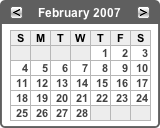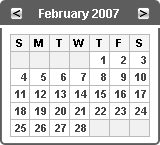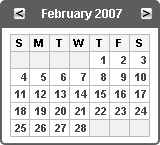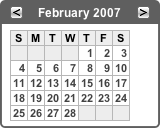Hopefully (yes, I know that’s not a word, but hopefully William F. Buckley isn’t reading this), this site has now become slightly easier to use, thanks to my super-cool new translucent navigation bar. I’m taking the transparent PNG thing to the next level here, stacking transparencies on top of one another, and the overall effect is very cool, I think: the nav bar is shaded, but you can still see the photo through it all. Actually, the individual text links on the nav bar are separate transparent PNGs, in the top layer. (OK, technically they’re not CSS layers, but whatever.) Then the nav bar itself is part of the next layer down, which includes all of the shading and the logo that are overlaid upon the actual photo, which is at the bottom. This way, I can easily swap in new photos without having to redesign anything else. The photos just need to be cropped to the right dimensions. (Of course, it’s been ages since I’ve taken a new “34” photo. But maybe now I’ll get back into that project. I really want to take a picture of the signs at the end of the offramp from eastbound 494 onto County 34, because they’ve got “End MN 100” and “Begin Cty 34” side-by-side. And I’ve been a fan of 100 since I was about 5 [for some reason… but at any rate, this parenthetical has gone on far too long now].)
I’ve also added in an “Offspring” link which, if you’re logged in and have been granted access, will take you to the new Gallery2-based photo library. But since I don’t want just any old stranger/psycho looking at pictures of my kids, I’ve added the log-in requirement. Like I mentioned in my last post, if I know you, feel free to register for an account, and then let me know and I’ll set you up with access to the gallery.



